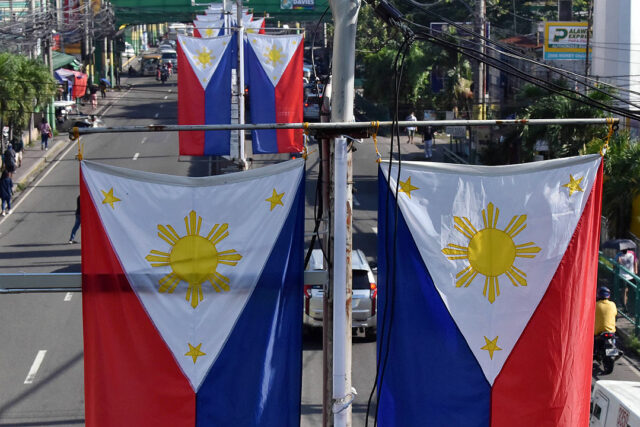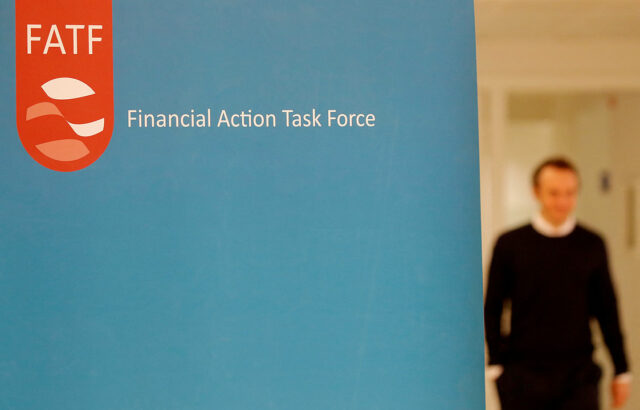DUBAI/WASHINGTON – Israel is vowing to wipe out Hamas in a relentless onslaught on the Gaza Strip but has no obvious endgame in sight, with no clear plan for how to govern the ravaged Palestinian enclave even if it triumphs on the battlefield.
Codenamed “Operation Swords of Iron”, the military campaign will be unmatched in its ferocity and unlike anything Israel has carried out in Gaza in the past, according to eight regional and Western officials with knowledge of the conflict who declined to be named due to the sensitivity of the matter.
Israel has called up a record 360,000 reservists and has been bombarding the tiny enclave non-stop following Hamas’s assault on southern Israel on Oct. 7, which killed about 1,400 people, mostly civilians.
The immediate Israeli strategy, said three regional officials familiar with discussions between the US and Middle Eastern leaders, is to destroy Gaza’s infrastructure, even at the cost of high civilian casualties, push the enclave’s people towards the Egyptian border and go after Hamas by blowing up the labyrinth of underground tunnels the group has built to conduct its operations.
Israeli officials have said that they don’t have a clear idea for what a post-war future might look like, though.
Some of US President Joe Biden’s aides are concerned that while Israel may craft an effective plan to inflict lasting damage to Hamas, it has yet to formulate an exit strategy, a source in Washington familiar with the matter said.
Trips to Israel by Secretary of State Antony Blinken and Defense Secretary Lloyd Austin this past week had stressed the need to focus on the post-war plan for Gaza, the source added.
Arab officials are also alarmed that Israel hasn’t set out a clear plan for the future of the enclave, ruled by Hamas since 2006 and home to 2.3 million people.
“Israel doesn’t have an endgame for Gaza. Their strategy is to drop thousands of bombs, destroy everything and go in, but then what? They have no exit strategy for the day after,” said one regional security source.
An Israeli invasion has yet to start, but Gaza authorities say 3,500 Palestinians have already been killed by the aerial bombardment, around a third of them children – a larger death toll than in any previous conflict between Hamas and Israel.
Mr. Biden, on a visit to Israel on Wednesday, told Israelis that justice needed to be served to Hamas, though he cautioned that after the 9/11 attacks on New York, the U.S. had made mistakes.
The “vast majority of Palestinians are not Hamas”, he said. “Hamas does not represent the Palestinian people.”
Aaron David Miller, a Middle East expert at the Carnegie Endowment for International Peace, said Mr. Biden’s visit would have given him a chance to press Israeli leader Benjamin Netanyahu to think through issues such as the proportional use of force and the longer-term plans for Gaza before any invasion.
‘CITY OF TUNNELS’
Israeli officials, including Netanyahu, have said they will wipe out Hamas in retribution for the attack, the deadliest in Israel’s 75-year-old history.
What will follow is less defined.
“We are of course thinking and dealing with this, and this involves assessments and includes the National Security Council, the military and others about the end situation,” Israeli National Security Council director Tzachi Hanegbi told reporters on Tuesday. “We don’t know what this will be with certainty.”
“But what we do know is what there will not be,” he said, referring to Israel’s stated aim to eradicate Hamas.
This might be easier said than done.
“It’s an underground city of tunnels that make the Vietcong tunnels look like child’s play,” said the first regional source, referring to the Communist guerrilla force that defied U.S. troops in Vietnam. “They’re not going to end Hamas with tanks and firepower.”
Two regional military experts told Reuters that Hamas’ armed wing, the Ezzedine al-Qassam Brigades, has mobilised for an invasion, setting up anti-tank mines and booby-trapped explosive devices to ambush troops.
Israel’s coming offensive is set to be much bigger than past Gaza operations that Israeli officials had previously referred to as “mowing the grass”, degrading Hamas’s military capabilities but not eliminating it.
Israel has fought three previous conflicts with Hamas, in 2008-9, 2012 and 2014, and launched limited land invasions during two of those campaigns, but unlike today, Israel’s leaders never vowed to destroy Hamas once and for all.
In those three confrontations, just under 4,000 Palestinians and fewer than 100 Israelis died.
There is less optimism in Washington, though, that Israel will be able to completely destroy Hamas and U.S. officials see little chance that Israel will want to hold onto any Gaza territory or re-occupy it, the US source said.
A more likely scenario, the person said, would be for Israeli forces to kill or capture as many Hamas members as they can, blow up tunnels and rocket workshops, then after Israeli casualties mount, look for a way to declare victory and exit.
CLOUDS OF WAR
The fear across the region is that the war will blow up beyond the confines of Gaza, with Lebanon’s Hezbollah and its backer Iran opening major new fronts in support of Hamas.
Iranian Foreign Minister Hossein Amir-Abdollahian warned of a possible “preemptive” action against Israel if it carried out its invasion of Gaza. He said last weekend that Iran would not watch from the sidelines if the U.S. failed to restrain Israel.
Arab leaders have told Blinken, who has been criss-crossing the region this past week, that while they condemn Hamas’ attack on Israel, they oppose collective punishment against ordinary Palestinians, which they fear will trigger regional unrest.
Popular anger will ratchet up across the region when the body count rises, they said.
Washington has sent an aircraft carrier strike group to the eastern Mediterranean and is concerned that Hezbollah might join the battle from Israel’s northern border. There has been no sign, however, that the US military would then move from a deterrent posture to direct involvement.
The regional sources said Washington was proposing to re-energize the Palestinian Authority (PA), which lost control of Gaza to Hamas in 2007, although there is huge doubt whether the PA or any other authority would be able to govern the coastal enclave should Hamas be driven out.
Mr. Miller, a former US Middle East negotiator, expressed deep skepticism about the potential for establishing a post-Hamas government to rule Gaza.
“I could paint you a picture more appropriate to a galaxy far, far away and not on planet Earth on how you could combine the U.N., the Palestinian Authority, the Saudis, the Egyptians, led by the US marshaling the Europeans, to basically convert Gaza from an open-air prison to something much better,” he said.
In the meantime, calls for the creation of humanitarian corridors within Gaza and escape routes for Palestinian civilians has drawn a strong reaction from Arab neighbors.
They fear an Israeli invasion will spark a new permanent mass wave of displacement, a replay of the 1948 Israeli war of independence and 1967 Arab-Israeli war. Millions of Palestinians who were forced to flee then have remained stranded as refugees in the countries that hosted them.
East Jerusalem, captured by Israel in the 1967 war and then annexed, and Israeli settlement expansion across occupied territory are at the core of the conflict with Palestinians. Netanyahu has openly embraced the religious and radical far-right, promising to annex more land to be settled by Jews.
Hundreds of Palestinians have died in the West Bank since the start of the year in repeated clashes with Israeli soldiers and settlers, and there is widespread concern that the violence might engulf the territory as nearby Gaza burns.
“Whatever worst-case scenario you have, it will be worse,” a second regional source said about the potential for the conflict to spread beyond Gaza. – Reuters


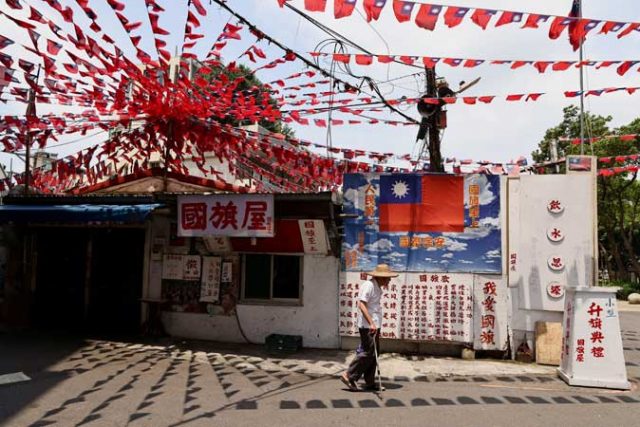



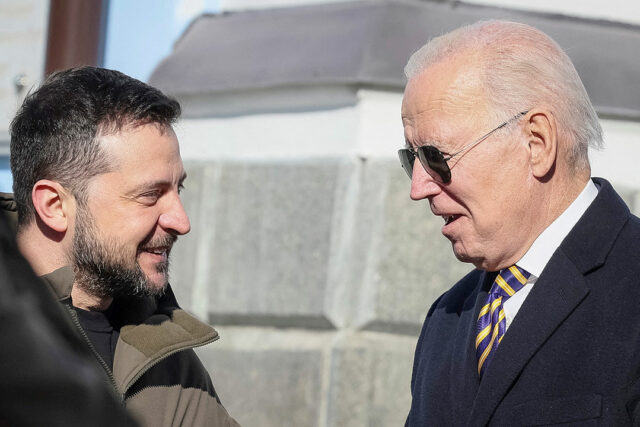
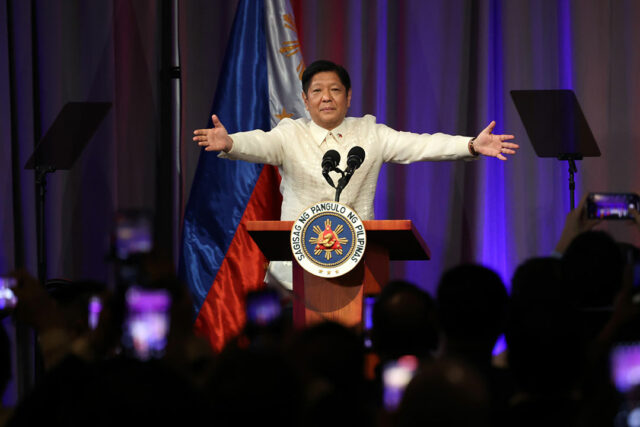

 “To fight corruption, one must first understand it,” says our best-selling author, ACG Founding Chairman and Chief Tax Advisor Mon Abrea.
“To fight corruption, one must first understand it,” says our best-selling author, ACG Founding Chairman and Chief Tax Advisor Mon Abrea.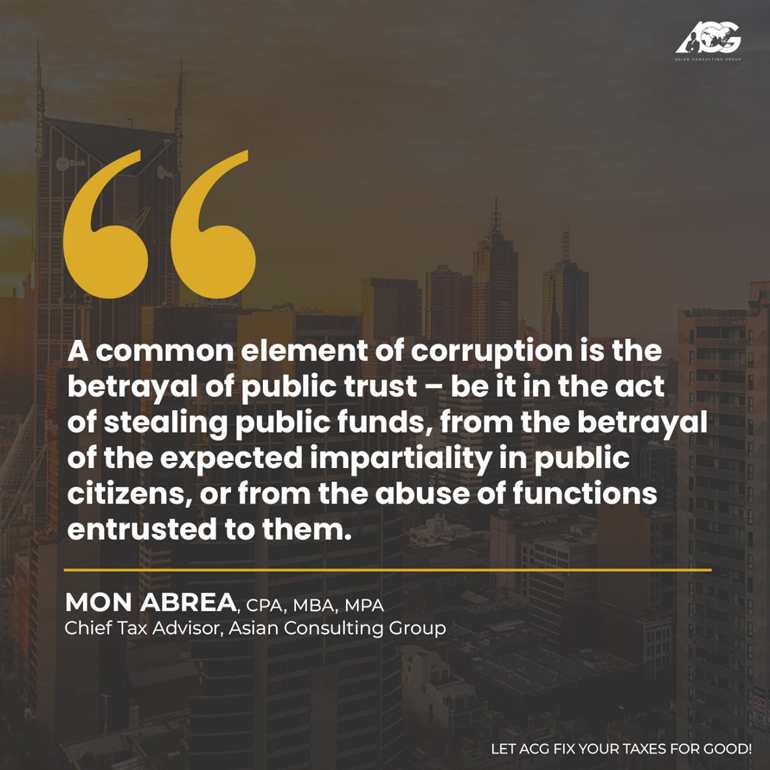 “Governance is a shared responsibility,” reminds Mr. Abrea. “If people want good governance, they must remain vigilant over the actions of their leaders and public officials.”
“Governance is a shared responsibility,” reminds Mr. Abrea. “If people want good governance, they must remain vigilant over the actions of their leaders and public officials.”

